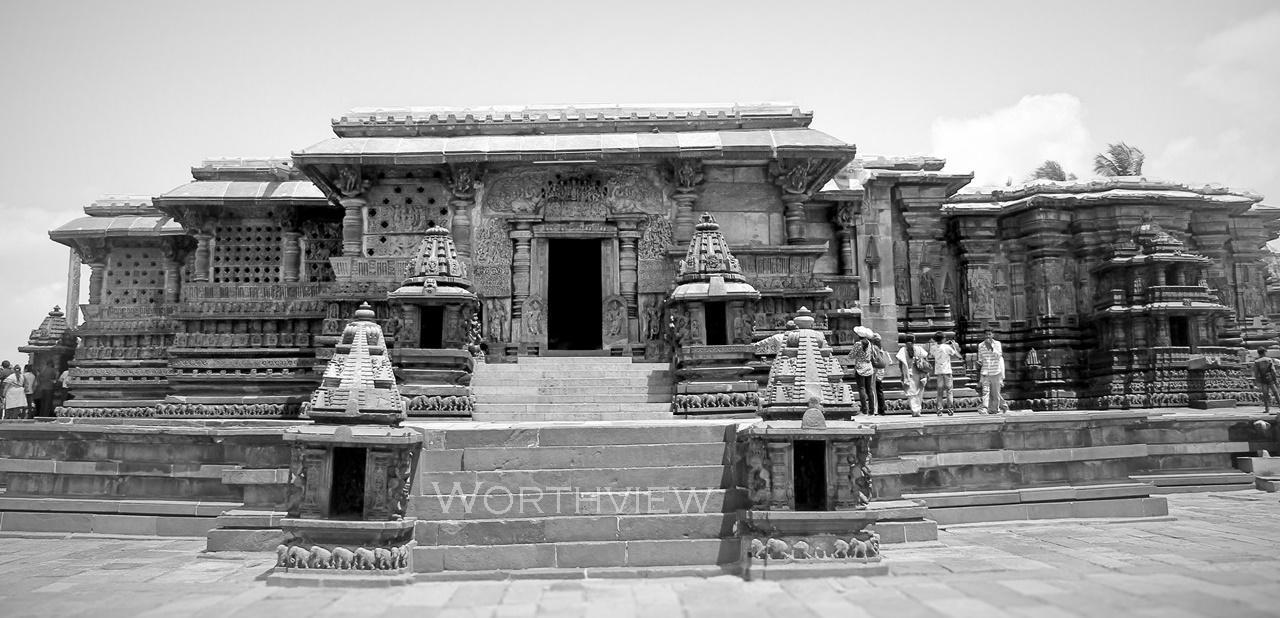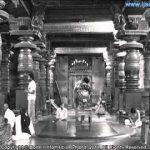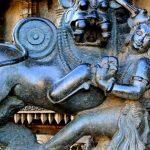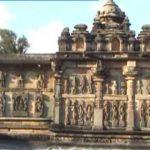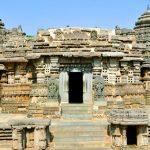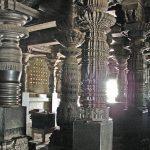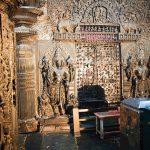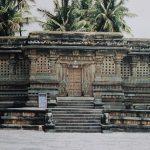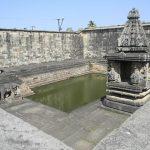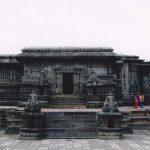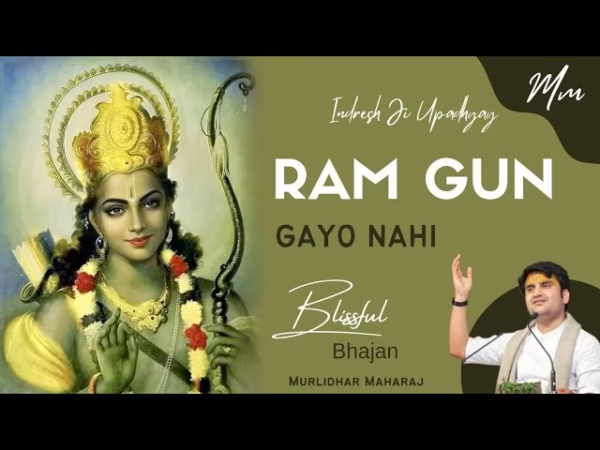Contents
Chennakeshava Temple, Belur, Hassan, Karnataka
| Date built: | 12th-century |
|---|---|
| Deity: | – |
| Architectural style: | Hoysala architecture |
| Major festivals | – |
| Locale: | Belur, Karnataka, India |
| District:: | Hassan |
| Address: | Temple Road, Hassan District, Belur, Karnataka 573115 |
| Phone | 081772 22218 |
The Chennakeshava Temple, also referred to as Keshava, Kesava or Vijayanarayana Temple of Belur, is a 12th-century Hindu temple in the Hassan district of Karnataka state, India. It was commissioned by King Vishnuvardhana in 1117 CE, on the banks of the Yagachi River in Belur also called Velapura, an early Hoysala Empire capital. The temple was built over three generations and took 103 years to finish. It was repeatedly damaged and plundered during wars, repeatedly rebuilt and repaired over its history. It is 35 km from Hassan city and about 200 km from Bengaluru.
Chennakesava (lit, “handsome Kesava”) is a form of the Hindu god Vishnu. The temple is dedicated to Vishnu and has been an active Hindu temple since its founding. It is reverentially described in medieval Hindu texts, and remains an important pilgrimage site in Vaishnavism. The temple is remarkable for its architecture, sculptures, reliefs, friezes as well its iconography, inscriptions and history. The temple artwork depicts scenes of secular life in the 12th century, dancers and musicians, as well as a pictorial narration of Hindu texts such as the Ramayana, the Mahabharata and the Puranas through numerous friezes. It is a Vaishnava temple that reverentially includes many themes from Shaivism and Shaktism, as well as images of a Jina from Jainism and the Buddha from Buddhism. The Chennakeshava temple is a testimony to the artistic, cultural and theological perspectives in 12th century South India and the Hoysala Empire rule.
The Belur temple complex along with the nearby Hindu and Jain Temples at Halebidu have been proposed to be listed under UNESCO World Heritage Sites
Architecture
Legend / Local stories
The Hoysala period of South Indian history began about 1000 CE and continued through 1346 CE. In this period, they built around 1,500 temples in 958 centres.Belur is called Beluhur, Velur or Velapura in old inscriptions and medieval era texts. It was the early capital of the Hoysala kings. The city was so esteemed by the Hoysalas that it is referred to as “earthly Vaikuntha” (Vishnu’s abode) and “dakshina Varanasi” (southern holy city of Hindus) in later inscriptions.
One of the Hoyasala kings was Vishnuvardhana, who came to power in 1110 CE. He commissioned the Chennakeshava temple dedicated to Vishnu in 1117 CE after an important military victory in 1116 CE.According to a later mythology, Vishnuvardhana built this temple to mark his conversion to Sri Vaishnavism after coming under the influence of Ramanuja, but states Shadakshari Settar, the historical records do not support this theory.
The Chennakeshava temple at Belur took 103 years to build. Vishnuvardhana moved his capital to Dvarasamudra (now called Halebidu), where he started the construction of the Hoysaleswara Temple dedicated to Shiva. Its construction continued till he died in 1140 CE. His legacy was continued by his descendants who completed the Hoysaleswara Temple in 1150 CE, and the Chennakesava Temple, Somanathapura in 1258 CE.The Hoysalas employed many noted architects and artisans who developed a new architectural tradition, which art critic Adam Hardy called the Karnata Dravida tradition.
The Hoysala Empire and its capital was invaded, plundered and destroyed in the early 14th century by Malik Kafur, a commander of the Delhi Sultanate ruler Alauddin Khalji.Belur and Halebidu became the target of plunder and destruction in 1326 CE by another Delhi Sultanate army.The territory was taken over by the Vijayanagara Empire.The Hoysala style, states James C. Harle, came to an end in the mid 14th century, when King Ballala II was killed in a war with the Muslim army led by Malik Kafur.
Photo Gallery
How to Reach:
The Chennakeshava Temple is located in Belur taluk in Hassan district of the Indian state of Karnataka. It is about 35 kilometres (22 mi) northwest of Hassan. The temple is about 16 kilometres (9.9 mi) from Halebidu temples.Belur has no nearby airport, and is about 200 kilometres (124 mi) west of Bengaluru (IATA Code: BLR), about 3.5 hours drive accessible with a four lane NH75 highway. Hassan is the closest city near Belur that is connected by railway network to major cities of Karnataka.
The Chennakeshava Temple is an active Hindu temple and a major Vaishnava pilgrimage site.It is located on the banks of Yagachi River (also called Badari River in historic texts), a tributary of Hemavati River.
Belur is where Chennakesava Temple is located so all transit routes need to go via the town. The other major urban areas around the temple include Hassan city.
By Air
The Mangalore Airport is around 130 kilometres from Belur, while Bangalore International Airport is around 222 kilometres away. From the airports, the most ideal choice of travel is by road.
By Rail
The nearest railway station to the town of Belur is in Chikmagalur, which is 22 kilometres away. Hassan railway station is around 32 kilometres away from Belur town. There are many buses that ply between these towns.
By Road
Bangalore city is 220 kilometres away from Belur via the NH75. If one is travelling from Mysore, the journey is 155 kilometres long via the SH 57. The coastal city of Mangaloreis 153 kilometres away via the NH73. There are regular buses that ply to Belur from Hassan, Chikmagalur, Bangalore, Mysore and Mangalore.
Contact Details
Official Address

